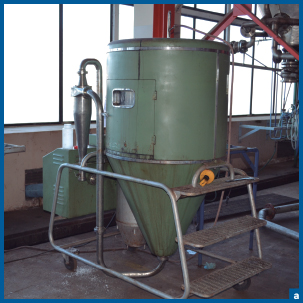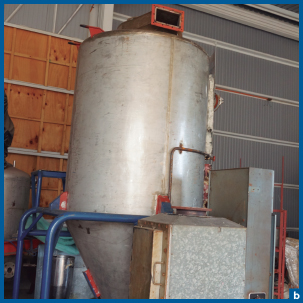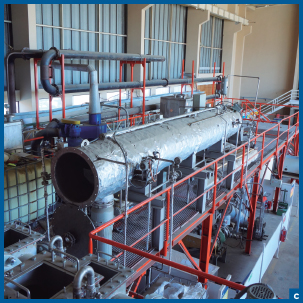
a) Spray Dryer I
Brand and model: Büttner – Schilde – Hass AG.
Capacity: (0 – 7) L/h
Description: The solution to be evaporated is injected in small drops at the top of the dryer through a centrifugal nozzle, powered by pressurized air. The solution flow may vary within a certain range. Moreover, the drying air is heated by four electrical resistors and introduced into the dryer together with the solution. During a very short period, the small particles of the solution dispersed in the drying air move into the conical bottom of the dryer and then transported to a cyclone, where the vapor and solid particles are separated.

b) Secador spray II
Brand and model: Industriewerke Karlsruhe, Model: C 80A-00.00.
Capacity: 0 – 50 L/h
Description: The solution to be dried is injected through a sprayer at the top of the dryer, powered by a dosing pump. The solution flow may vary according to the requirements of the process. The sprayed solution is dried by direct contact with hot air, which receives energy intake by means of electrical resistances. Finally, the separation of the dried material is performed by the action of a cyclone filter.

c) Vacuum belt dryer
Brand and model: ISESA.
Capacity: Depends on the solution to be dried
Description: The dryer consists of a Teflon treadmill of a 495 cm long and 43 cm wide, mounted horizontally inside a stainless steel cylinder, which is kept under vacuum. The treadmill moves on 5 flat heat exchangers, which can be fed with vapor, a thermal fluid or cooling water. The solution to be dried (which must have a viscosity of approximately 1000 centipoises) is fed in one end of the dryer, so that their distribution is uniform across the width of the treadmill. The treadmill moves continuously at a rate of 5 – 25 cm/min, in terms of which the solution comes successively into contact with the surface of 5 heat exchangers, which are maintained at specified temperatures. The energy transferred from the surface of the exchanger to the solution through the Teflon tape, causing a gradual evaporation of the solvent. If the material to be dried has plastic characteristics, usually the last exchanger is used as a cooler. At the end of the dryer, a mechanical device scrapes off the solid of the treadmill and is evacuated to a container.

d) Tray dryer
Brand and model: UDT- owned and manufactured
Capacity: Evaporation rate of 5 kg/h of water
Description: It has 5 trays, where the wet product is deposited, and receives energy intake directly through hot air, which is recirculated by an axial fan disposed within the drying chamber. An electrical resistance of 2 kW, which has a temperature control system, accomplishes the energy input. The dimensions of the drying chamber are 2m long, 1.3m wide and 2m high.
